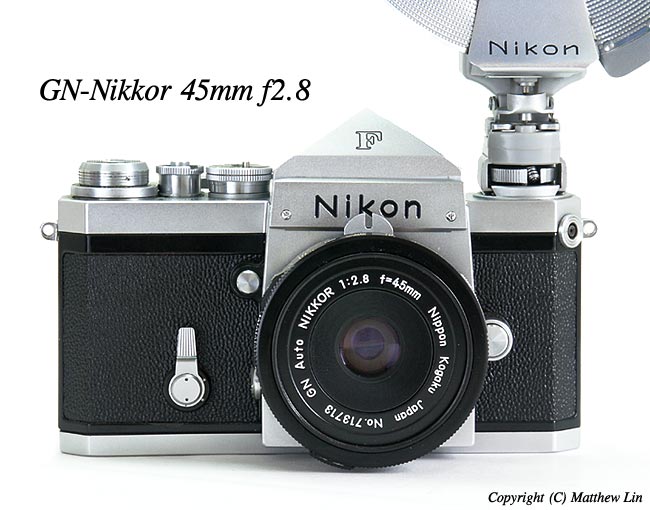 |
||||||||||||||
This is a rather well-known lens, but, surprisingly, many people don't actually know what it does or how it works. GN stands for Guide Number. This lens is designed specially for flash photography. Those who have only used TTL electronic flash all your life could not fully appreciate how clever this lens is. Before automatic flash was born (by automatic, I am not even talking about TTL here!), the standard procedure for taking a flash photo was to focus first and then read off the distance from the distance scale of your lens. The photographer would then refer to a table normaly attached to the back of the flash gun to determine what aperture to set on their lens. Every time the subject distance changed, this procedure had to be repeated. With GN Nikkor, the aperture ring is mechnically linked to the focusing ring, so that once the guide number of your flash gun is set with the GN coupler(see the photos below), the correct aperture is automatically chosen each time your subject distance changes. This is just like a "mechnical" computer! |
||||||||||||||
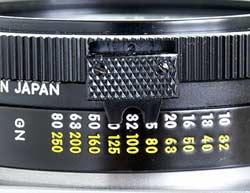 |
||||||||||||||
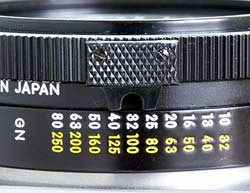 |
||||||||||||||
The GN coupler is released as shown in the photo above. The linkage between the focusing ring and aperture is disengaged. The two rings can now rotate independently and the lens will function just like an ordinary Nikon lens. |
The GN coupler is set to guide number 32 (meter) in this photo. The aperture will be automatically adjusted as you turn the focusing ring to give you the correct exposure corresponding to the output of a guide number 32 flash gun. |
|||||||||||||
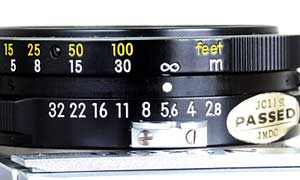 |
||||||||||||||
The distance scale on the GN-Nikkor is graduated opposite to that on any other Nikon lenses because of the linkage mechanism. Note the infinity focus setting being to the right. (Picture on the left) |
||||||||||||||
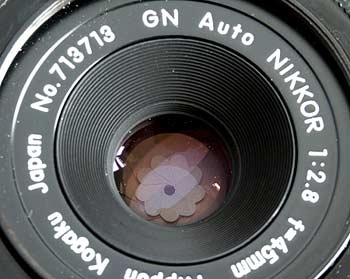 |
||||||||||||||
The first version of this lens, starting from serial no. 710101 to mid-72xxxx, consists of 9 aperture blades in order to produce a better "Bokeh" for flash photography. This was reduced to 7 blades from second version onwards. (Picture on the right) |
||||||||||||||
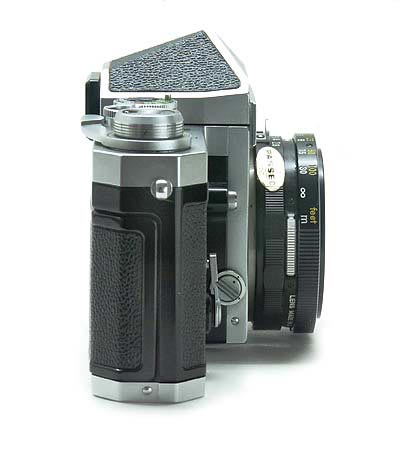 |
||||||||||||||
Because this lens only protudes around 2cm from the camera body, it is sometimes referred to as "Pancake lens". In 2001, Nikon introduced a new pancake lens 45mm f2.8P which really has got nothing to do with flash photography. (Picture on the left) |
||||||||||||||
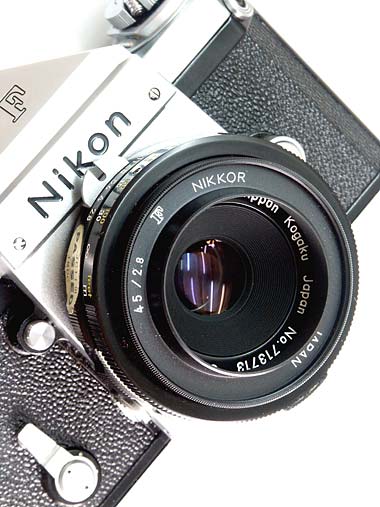 |
||||||||||||||
The first version of the very hard to find original hood is shown on the right. The second version is marked as HN-4. (See photo below) |
||||||||||||||
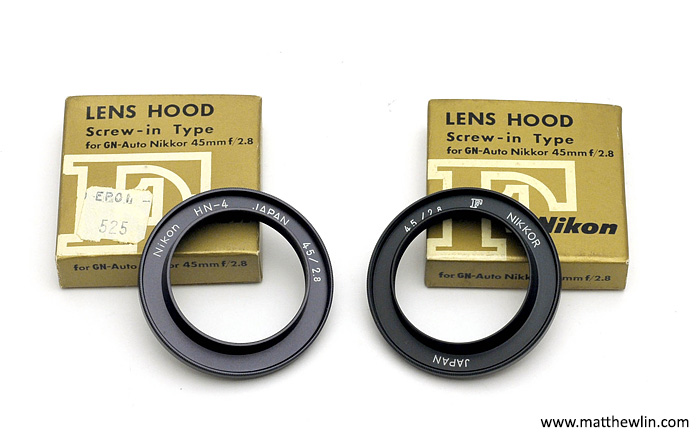 |
||||||||||||||
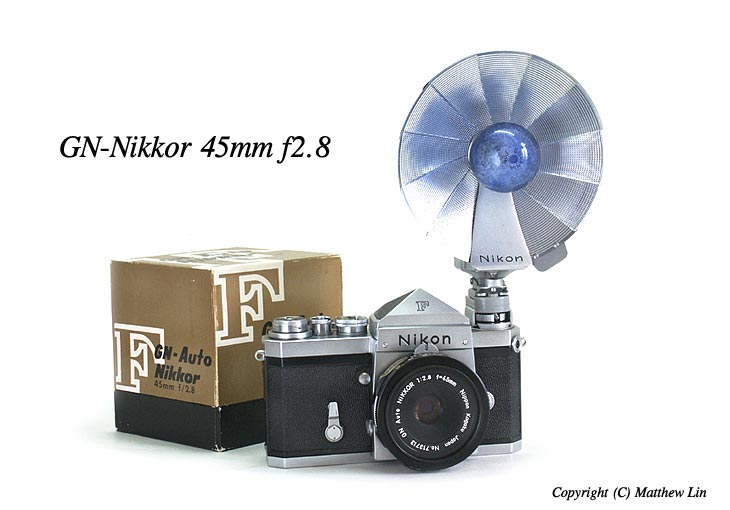 |
||||||||||||||
Updated on 7 Nov 2015 |
||||||||||||||